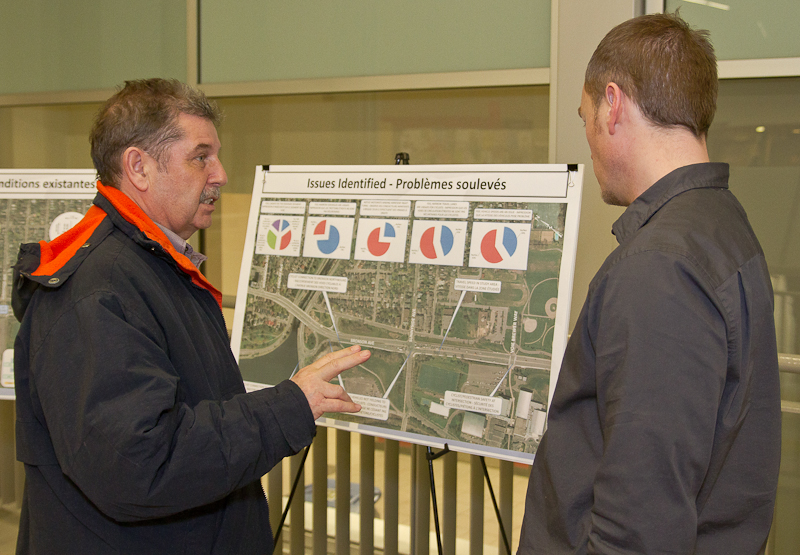The City of Ottawa transportation committee unveiled detailed proposals to conceptually change Bronson Avenue at a forum in Carleton’s atrium Feb. 27.
The city worked with Carleton’s Graduate Students’ Association (GSA), CU Cycling, and Ontario Public Interest Research Group -Carleton to bring the open house to Carleton. The open house was meant to get input from all the groups that are most immediately affected by traffic issues on Bronson, according to Capital Ward councillor David Chernushenko.
Chernushenko said it is essential to address the issue of speeding cars, collisions, and pedestrian and cycling safety in light of the death of Carleton student Krista Johnson.
A vehicle struck Johnson in October while she was cycling against traffic on Bronson.
“The recent death was the straw that broke the camel’s back. One more tragedy on this road is too many. Let’s do something about it now,” Chernushenko said.
Posters outlining the possible changes to Bronson were displayed for passing students, faculty, and residents of Ottawa to observe and comment on.
Among the proposed changes is a new crosswalk between the neighbourhood and Carleton, creating a buffer zone between cyclists and motorists, increasing pedestrian and cyclist crossing time, installing new signs, and better paint markings at the Brewer intersection.
Second-year criminology student David Cotten said changing Bronson Avenue will make him feel safer in the community.
“The new crosswalk will make students more comfortable with actually crossing the road, which is something I don’t think anyone feels safe doing at the moment,” Cotten said.
GSA executive co-ordinator Phil Robinson said these proposed changes are extremely important to the association, which has been advocating for cycling and pedestrian issues for a number of years. He said the issue is extremely important due to the loss of a Carleton student last fall.
“We’re very impressed by how quickly they’ve come out,” Robinson said. “My one concern is that these are still proposals and some of them will take a significant amount of time to implement.”
Alex DeVries, member of the advocacy group Citizens for Safe Cycling, said that although when implemented the changes will improve cycling and pedestrian conditions, the city does not do enough to increase safety on Bronson.
“In the new proposal, we can see a lot of interest in separating pedestrians and cars but we don’t see any changes to actually slowing traffic. What changes driver behaviour is landscaping, narrower lanes, and that doesn’t seem to be the motivation of the city,” deVries said.
Chernushenko said the city appreciated all feedback given.
He said it is within their power and budget to implement these changes but said certain groups – like Carleton’s – close proximity to the busy road called for public input.
“We felt it was important to let the public know what we’re thinking of, test it, and get feedback from them.”
Above all, Chernushenko said it is important to realize these changes will make it safer and more pleasant for everyone – drivers, cyclists, and pedestrians alike.






